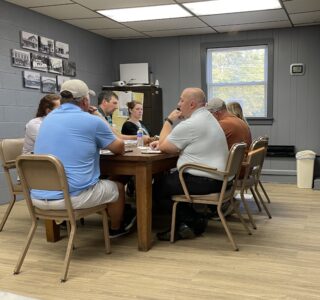‘Free College’ Putting Pressure On SUNY Fredonia
FREDONIA — Less than a month after the news of the Excelsior scholarship broke, The State University of New York at Fredonia’s College Council met to discuss the potential implications it could have for the college.
“The Excelsior awards were put in late in the state budget process, including late night, and we knew that there had been a proposal for this, but I think many of us had not expected them to go forward, but they were approved,” said SUNY Fredonia President Virginia Horvath. “Right away, the phone started ringing in financial aid and in admissions — ‘What does this mean for me?'”
When Associated Vice President for Enrollment Daniel Tramuta looked at the current SUNY Fredonia population, saw how many would be eligible for the Excelsior scholarship, and calculated how much it would cost to give “last-dollar” tuition coverage to those eligible students, the total came out to over $4 million.
“We don’t have an extra $4 million to cover that, but there’s not a lot of confidence that the state has really predicted, accurately, how much this will cost,” Horvath stated.
There’s also discussion now that the scholarship will turn into a lottery — students will go through the application process and then, by chance, some students will be awarded money, and some will not.
With the budget only being under a month old, there are still a lot of details that need to be ironed out, and questions that school officials are chomping at the bit to have answers to.
For example, if students do not end up following through with the requirements of the grant, and the grant gets converted to a loan, who is in charge of following up with students and make sure they’re still living in New York state for the required number of years, or has the needed GPA? Will the tasks fall to the government? The university? Who will be in charge of collecting payments if the grant turns into a loan?
There could also be financial implications for the university as well, if they end up having to bear some of that $4 million burden.
“There could be huge financial implications for us if there’s the expectation that we cover that [$4 million]. Unlike our private school friends, we cannot waive tuition. Private schools offer discounts … We can’t do that. We can’t just lower the price of tuition for some people,” Horvath explained. “So we have to match it [dollar for dollar] and actually pay the tuition, and we count on foundation scholarships, institutional scholarships — we have those dollars. If we now have a $4 million gap between awards given to people and dollars coming from the state, we have a negative financial impact.”
Frank Pagano, chairman of the College Council, also shared his concerns with the tuition freeze, and every year having different groups of students with different tuition rates to keep track of.
“What concerns me is, those getting the scholarship, we have to freeze the tuition on that for four years, so then there’s going to be all kinds of different charts. Some kids will be paying four years from now what they’re paying this year, and then next year’s kids will pay more and this goes on forever. Who picks up those costs?” asked Pagano.
So with so many unanswered questions and concerns, and so many details to work out, why did the state enact this scholarship this year, instead of waiting for the 2018-19 school year?
The answer to that is, enrollment numbers.
“I worried about the impact on us, if people said, ‘I’m not going to go in 17-18, because it’s free for me in 18-19,’ that would not have been good,” Horvath explained. “So I understand why they went quickly, but there are so many details.”
Additionally, Pagano mentioned that not only are community colleges considering raising tuition by 3.5-5 percent in anticipation of tuition freezes for four years, but private collages were allocated extra dollars in the budget for an increase in tap, after enough private school officials went forward and said that last-dollar tuition for public universities would affect their enrollment drastically.
“…They put dollars in the budget for increased TAP for students going to private schools. But it was a significant commitment of dollars. It’d be easier if they’d give us an increase in TAP — it’d be easier than this, frankly,” Horvath responded.
There are, however, potential upsides to the scholarship, the Council admitted, such as an increase in local commuter students, and the ability to make college more affordable and possible, thus making Fredonia, hopefully, a choice for students, and not a last resort.
According to the New York State Higher Education Services Corporation, it is anticipated that the Excelsior Scholarship application will be available in late May/early June.




